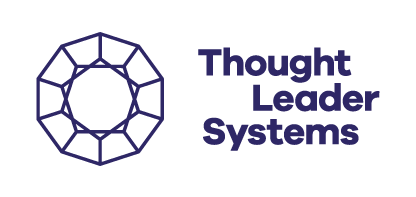With the concept of the Customer Journey, modern inbound marketing has replaced the traditional understanding of buying processes. Before the web and social media revolutionized customer behavior, it was often sufficient to segment customers into target groups and market segments. Inbound marketing has now replaced traditional target group segmentation with the concept of Buyer Personas. These ideal customer profiles focus much more closely than traditional marketing on how real buying processes occur and what assistance or information potential buyers need at each stage of their process. This structured view of buying processes is referred to as the Customer Journey or Buyer's Journey.
In traditional target group segmentation, we used observable criteria such as income level, life stage, age, and attitude criteria like the well-known Sinus-Milieus. Today, these are usually not sufficient to understand the information and purchasing behavior of potential customers on the internet.
Inbound Marketing relies on the modern understanding of customers through Buyer Personas, who navigate through the phases of their Customer Journey. When planning customer engagement, it's crucial to define early on which helpful content will target potential customers at each stage of their purchasing decision process. The goal of Inbound Marketing is to guide customers as quickly and efficiently as possible through each phase of their individual buying journey. Therefore, to identify your ideal target customers, you should first capture the purchasing decision process of your potential customers—the Customer Journey.
The Customer Journey in three ideal-typical phases
In the Awareness phase, a potential customer first develops an awareness of the problem, without yet thinking about a specific solution.
"For example, if you sell solar panels, you should pay attention to awareness-oriented Google searches by your customers, such as 'saving electricity' or 'reducing energy costs.' Solar technology as a solution is not yet relevant to customers at the beginning of their purchasing process. In the Awareness phase, customers are primarily focused on understanding their own problem, without considering possible solutions."4o mini
In the Consideration phase, the potential customer begins actively searching for solutions. They look for content and information that presents various ways to solve their problem and helps them find the optimal solution.
"For example, a solar panel producer should provide content that compares solar panels with other methods of reducing energy costs and highlights the advantages of solar technology. This demonstrates expertise and builds trust for customers in the Consideration phase."
Eventually, a prospect decides on a particular solution and now makes the choice of provider in the Decision phase. Analyze the purchasing mechanisms and provide content and tools that support your potential customers in their provider selection.
"In our example, the potential customer has decided on a solar panel system. They are now looking for not only information but also consulting offers, performance comparisons, cost simulation tools, etc. Provide customers with the necessary tools and information on the internet for their Decision phase."
However, the Customer Journey does not actually end there. In fact, the customer's journey has only just begun because after the purchase, in the Deployment phase, the customer will see if their trust in the brand and the products was justified.
"After purchasing a solar panel system, the customer should regularly receive purchase-confirmation information. Especially with a product that has such a long usability, it is crucial during the multi-year Deployment phase to keep the relationship with the customer active, constantly reminding them (and proving) the significant benefits the product provides. The solar panel producer can demonstrate each year the amount of money the customer has saved on electricity costs."
Conclusion:
Analyze the ideal information pathways of your customers and prospects along the Customer Journey. Capture all relevant customer contact points or Customer Touch Points, whether online or offline. Create a memorable and positive customer experience at all touchpoints, whether on the website, in direct mails, at the call center, or in conversations with personal advisors.


